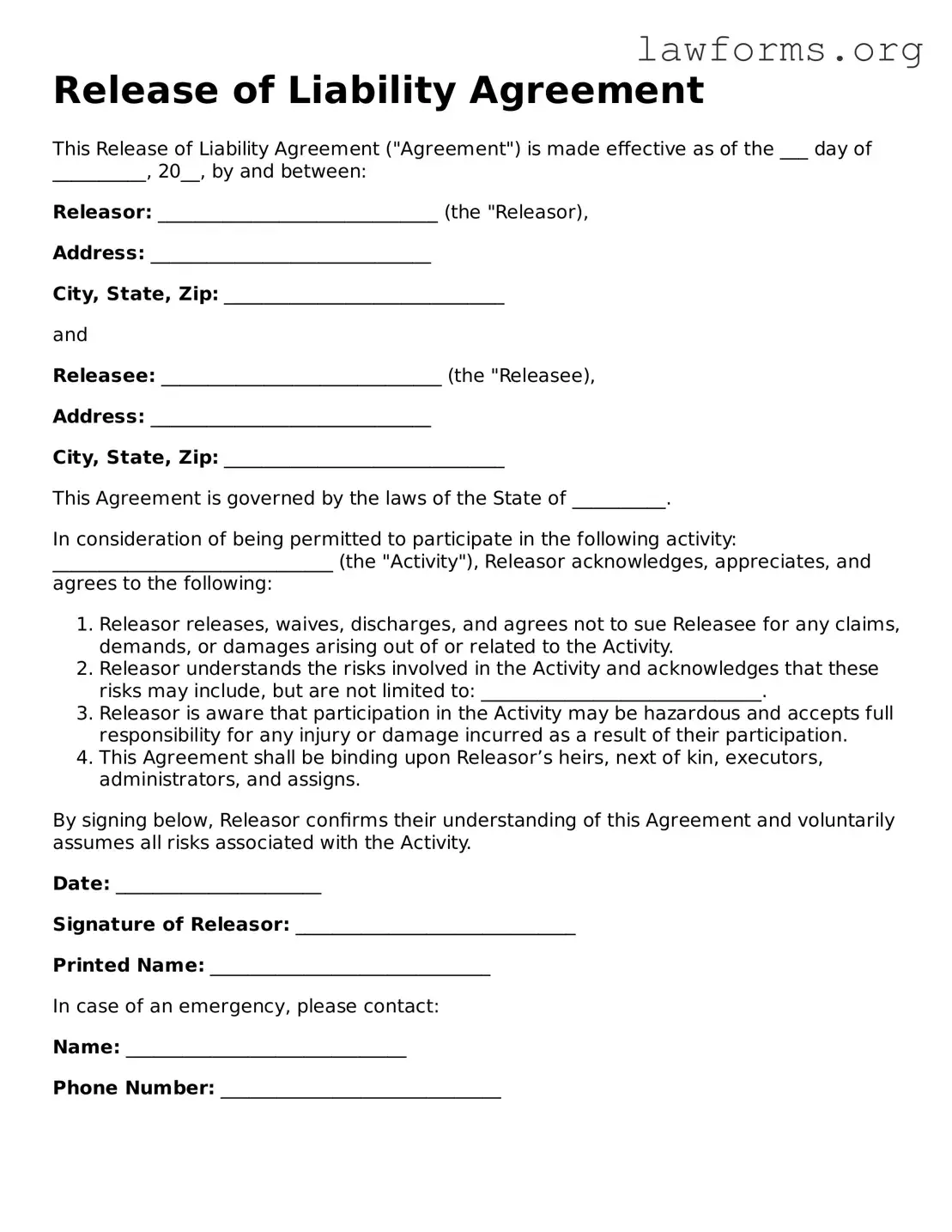Release of Liability Agreement
This Release of Liability Agreement ("Agreement") is made effective as of the ___ day of __________, 20__, by and between:
Releasor: ______________________________ (the "Releasor),
Address: ______________________________
City, State, Zip: ______________________________
and
Releasee: ______________________________ (the "Releasee),
Address: ______________________________
City, State, Zip: ______________________________
This Agreement is governed by the laws of the State of __________.
In consideration of being permitted to participate in the following activity: ______________________________ (the "Activity"), Releasor acknowledges, appreciates, and agrees to the following:
- Releasor releases, waives, discharges, and agrees not to sue Releasee for any claims, demands, or damages arising out of or related to the Activity.
- Releasor understands the risks involved in the Activity and acknowledges that these risks may include, but are not limited to: ______________________________.
- Releasor is aware that participation in the Activity may be hazardous and accepts full responsibility for any injury or damage incurred as a result of their participation.
- This Agreement shall be binding upon Releasor’s heirs, next of kin, executors, administrators, and assigns.
By signing below, Releasor confirms their understanding of this Agreement and voluntarily assumes all risks associated with the Activity.
Date: ______________________
Signature of Releasor: ______________________________
Printed Name: ______________________________
In case of an emergency, please contact:
Name: ______________________________
Phone Number: ______________________________
